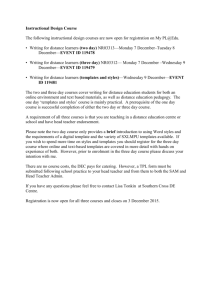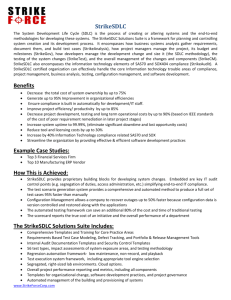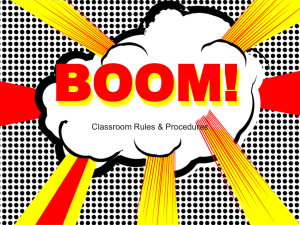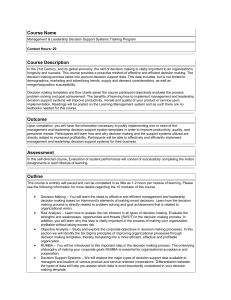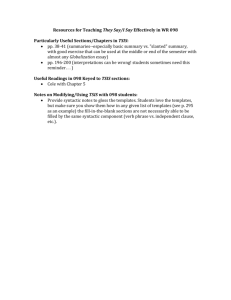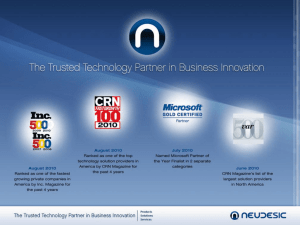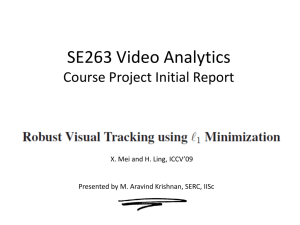Effective Lesson Planning
advertisement
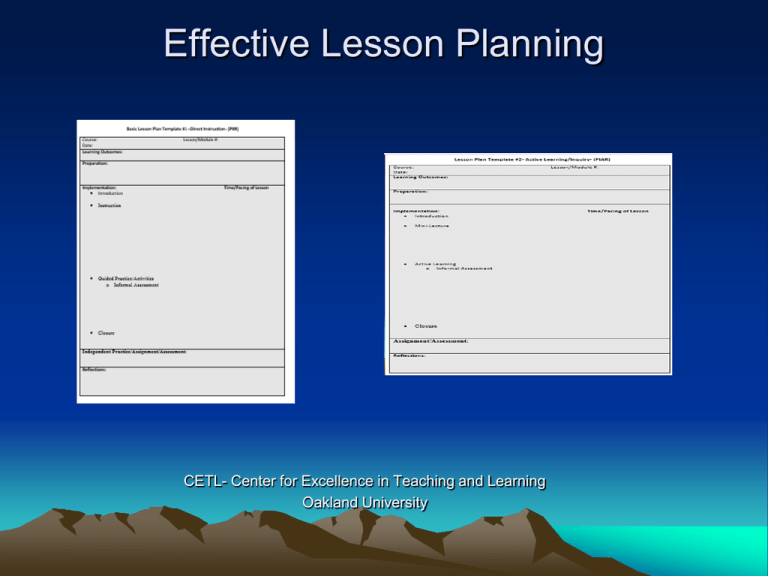
Effective Lesson Planning CETL- Center for Excellence in Teaching and Learning Oakland University Questions to Ponder 1. When you are developing a new course, how much time to you spend preparing for one lesson/session? (face-to-face/ on-line) 2. When you are teaching a course that you have already taught, how much time do you spend on preparing for one lesson/session? Preparing for Class 1. Do you spend your time on the content (i.e. what information you will provide? 2. How do you do this? (read articles, make lecture notes, etc.) 3. What percentage of your planning time is focused on the actual delivery/lesson plan? (i.e. how you will introduce lesson, what activities you will do, how you will assess understanding, etc.?) Agenda Welcome and Questions to Ponder Agenda and Learning Outcomes Lesson Planning Sample Lesson Plans Lesson Plan Templates Activities Wrap-Up- (anticipatory set) (input) (model) (guided practice) (closure) Learning Outcomes Participants will be able to: 1.Explain why it is advantageous to develop a lesson plan. 2. Use concepts from Madeline Hunter, Task Analysis and Backward Design in developing their own lesson plans. 3. Compare and contrast a range of lesson plan templates. 4. Select and use a lesson plan template for use in their classes. Lesson Planning is your Road Map • Learning Outcomes • Teaching/learning activities • Strategies to check student understanding Why should we focus on planning? • To ensure that we focus on learning outcomes • To keep us on track- do not get off track • To engage students in learning through active participation • To check for understanding • Focuses on learning of students- avoid the “talking head” of lectures • To pace lesson- timing – do not run out of time • Scope and sequence • For reflection and future planning and revision Old but Tried and True Techniques 1. Madeline Hunter Model of Direct Instruction 1. Objectives – learning outcomes 2. Anticipatory Set [hook] – focus attention, interest, connections to past learning 3. Standards/expectations - rationale 4. Teaching - content, instructional input Modeling/demonstration Direction giving, 5. Checking for understanding- ask questions, can also observe this through guided practice 6. Guided Practice – student practice with guidance or in groups 7. Closure –debrief and wrap-up 8. Independent Practice- homework, assignments, tests 2. Task Analysis • Breaking down task into small, sequential steps • Introducing each step sequentially and building upon steps • Chunking steps together • Involves practice 3. Backward Design Sample Lesson Plans Activity • In pairs, describe the format you use for lesson planning • What do you like about it Sample Lesson Plan Templates • We will review the following sample Lesson Plan Templates • The internet has 100s of templates • Find one that works for you Activity • In small groups, review the sample lesson plan templates • Which ones do you like, which ones do you not like? • Could you see yourself using one of these? • How might it help you? Activity • In pairs (or on your own)… • Use one of these templates and begin to plan your next class session for one of your classes. Discussion • What did you find by using one of these templates? What is your Take-away • • • • What is your take-away from this session Will this help you in the future? Advantages? Problems and Issues? Did we: Were participants able to: 1.Explain why it is advantage to develop a lesson plan. 2. Use concepts from Madeline Hunter, Task Analysis and Backward Design in developing their own lesson plans. 3. Compare and contrast a range of lesson plan templates. 4. Select and use a lesson plan template for use in their classes. Wrap-up • Did I model some of the key elements in the instructional part of lesson planning References and Resources Hara, B. (2010) “Lesson Planning for the University” Chronicle of Higher Education Milkova (retrieved 2014). Strategies for Effective Lesson Planning CRLT http://www.crlt.umich.edu Prégent, R. (2000). Charting your course: How to prepare to teach more effectively. Madison, Wisconsin: Atwood Publishing. Skowron, J. (2006). Powerful lesson planning: Every teacher’s guide to effective instruction.Thousand Oaks, California: Corwin Press. Wiggins, G & McTighe, J. (2006) Understanding by Design Virginia: ASCD A concise guide to writing learning objectives that also includes examples from courses at MIT: http://tll.mit.edu/help/teaching-materials-0 [7] Video clips of GSIs at the University of Michigan actively engaging students in a practice teaching session: http://crlte.engin.umich.edu/practiceteaching/ [8] Video clips of GSIs at the University of California, Berkeley, demonstrating the different parts of a lesson: http://gsi.berkeley.edu/teachingguide2009/instructionaltechnology/videoGallery.html [9]
